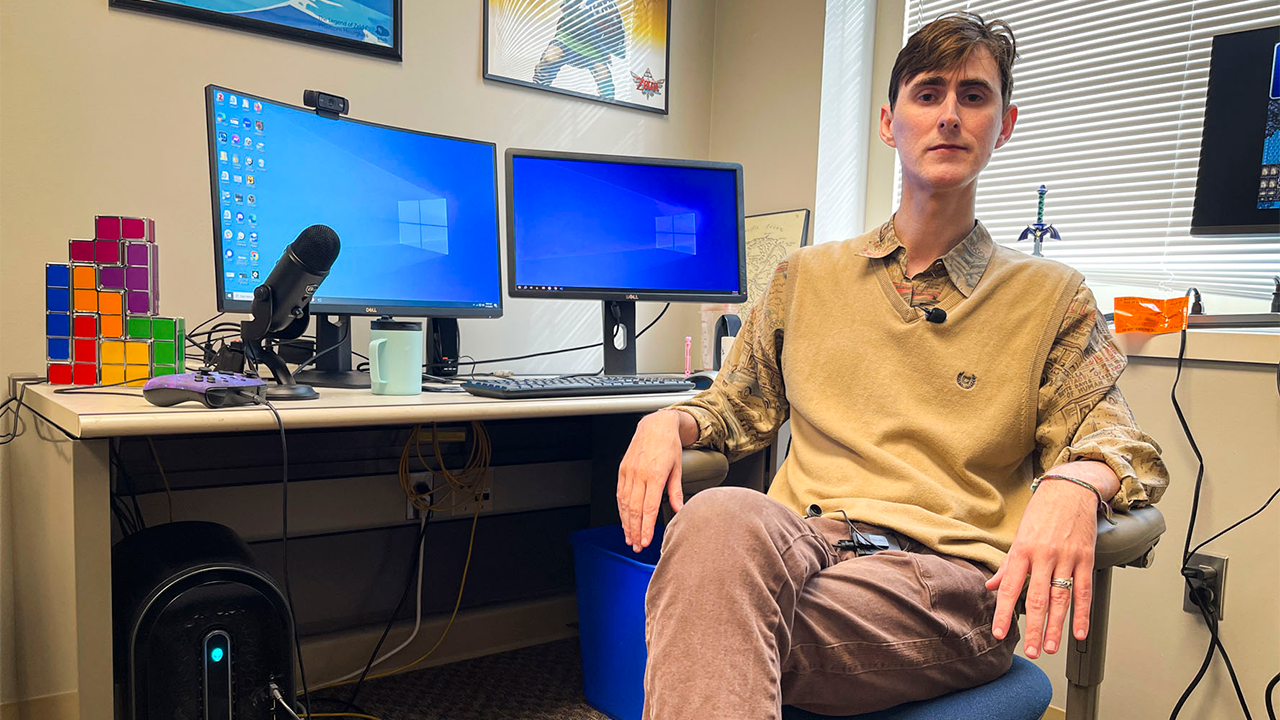Reviewed by Lily Ramsey, LLMDec 8 2023
Virtual reality headsets are commonly linked to interactive video games, but a University of Missouri researcher is employing them for a more crucial purpose—assisting autistic individuals in navigating public transportation on college campuses.
 MU’s Noah Glaser. Image Credit: University of Missouri
MU’s Noah Glaser. Image Credit: University of Missouri
Collaborating with Matthew Schmidt, an Associate Professor at the University of Georgia, and others, MU researcher Noah Glaser joined forces with a University of Cincinnati program for two studies aimed at offering virtual training opportunities to autistic individuals to practice using public buses for local commuting.
Utilizing artificial intelligence (AI), the research team discovered that autistic individuals often perceive their surroundings differently from neurotypical peers, and their attention and gaze patterns are frequently disrupted by sensory processing challenges in overstimulating environments.
These insights lay the groundwork for future research into how virtual reality simulations can boost the self-confidence and community engagement of autistic individuals by providing a secure environment for practicing various tasks.
There is an abundance of autism-related research in the medical industry, but we want to show how interventions beyond medicine can help autistic people feel more comfortable in society.
Noah Glaser, Assistant Professor, College of Education and Human Development, University of Missouri
Practice Makes Perfect
A research investigation focused on the navigation behavior of a cohort of young adults with autism within an on-campus bus system.
Glaser and his team developed a virtual reality simulation replicating a university campus and its shuttle system in precise detail to collect data.
Employing an artificial intelligence method termed “computer vision,” which enables computers to identify objects and make informed decisions, they scrutinized how participants, equipped with virtual reality headsets, interacted with physical objects during their simulated journey from various points on campus to the bus stop.
Subsequently, they juxtaposed this data with that of neurotypical users to identify potential differences.
We know that neurodiverse individuals often have sensory processing challenges, and certain environments — like going to a bus stop on a busy college campus — can be overstimulating and anxiety-inducing.
Noah Glaser, Assistant Professor, College of Education and Human Development, University of Missouri
Glaser added, “If we can identify which objects were most distracting to neurodiverse learners along their journey and what objects were being attended to the most, we can manipulate or reduce that extra stimuli in a safe, controlled environment before participants attempt that activity in the real world.”
Within the virtual simulation, an instructor demonstrated the skills that participants would later execute in real-life scenarios during a guided tour leading to the virtual bus stop.
Glaser stated, “This project helps us better understand the nature of human-computer interaction from a group of users who typically are left out of those conversations. We need more research with neurodiverse individuals to better understand how they interact with virtual reality learning environments so we can adapt the interventions to become more accessible.”
Applications Going Forward
Glaser emphasized that this research explores how AI and virtual reality simulators can aid special education professionals, intervention specialists, and instructional designers in assisting neurodiverse individuals.
Going forward, we can use these tools to help provide training opportunities for neurodiverse learners who are interested in cybersecurity and science, technology, engineering and math (STEM)-related fields. These are industries that have historically been severely underrepresented in people with disabilities and neurodiverse individuals.
Noah Glaser, Assistant Professor, College of Education and Human Development, University of Missouri
Glaser expressed his aspiration that his endeavors will facilitate the translation of the virtual skills adapted by neurodiverse learners into the real world. This, in turn, is anticipated to enhance not only their self-confidence but also their contributions to society as a whole.
Glaser stated, “This work can spark more opportunities for promoting inclusive learning environments and better understanding of how neurodiverse individuals use and interact with technology. When learning interventions are being developed, it is important we include neurodiverse individuals as part of the design process.”
Journal Reference:
Schmidt, M., et al. (2023) Through the lens of artificial intelligence: A novel study of spherical video-based virtual reality usage in autism and neurotypical participants. Computers & Education: X Reality. doi.org/10.1016/j.cexr.2023.100041.